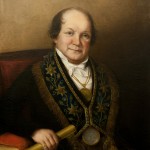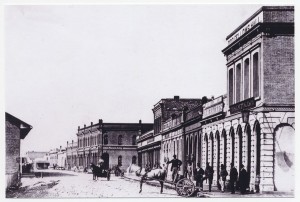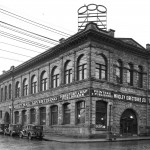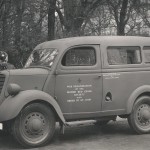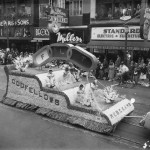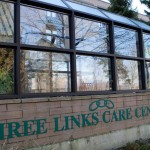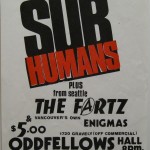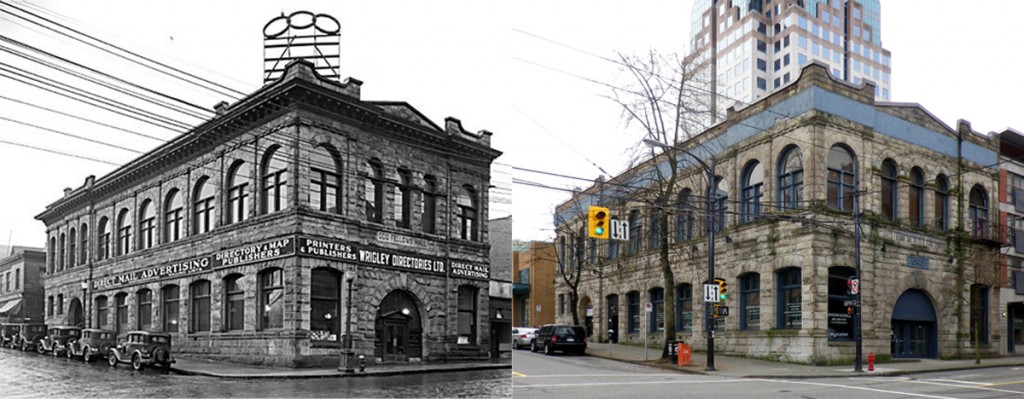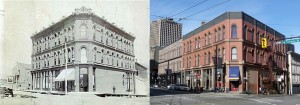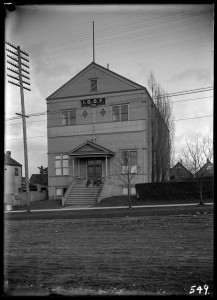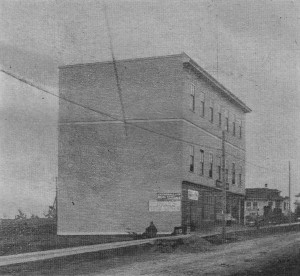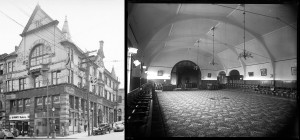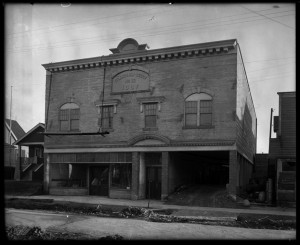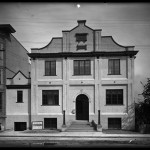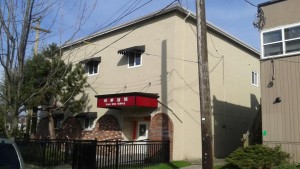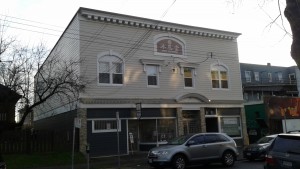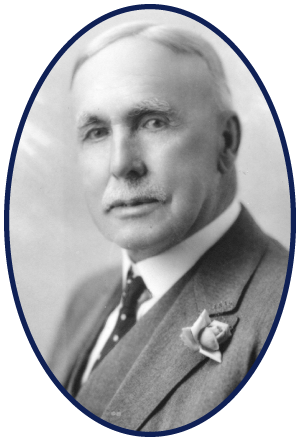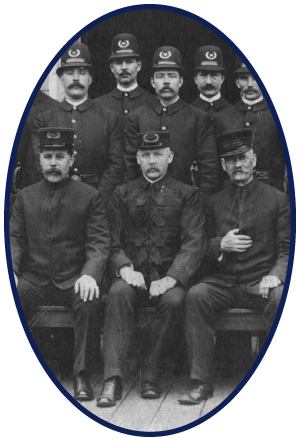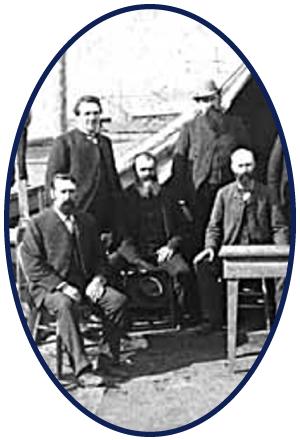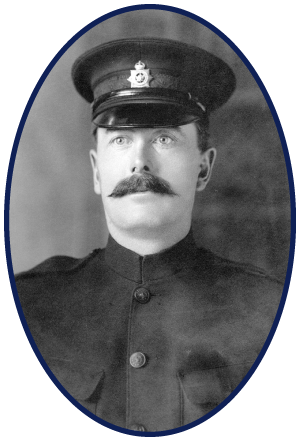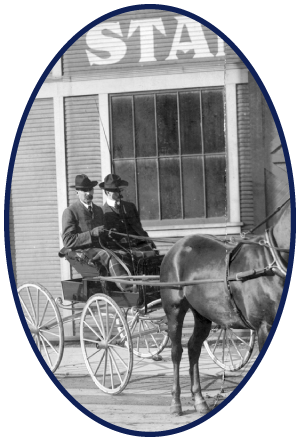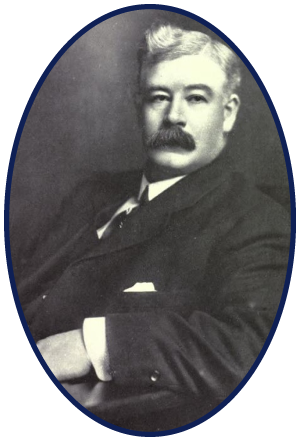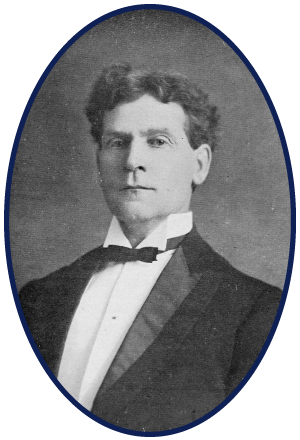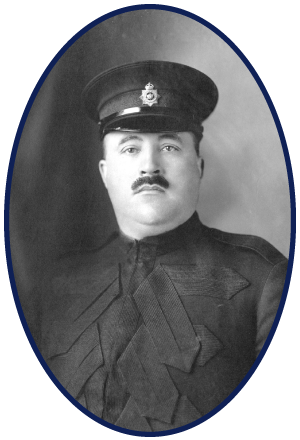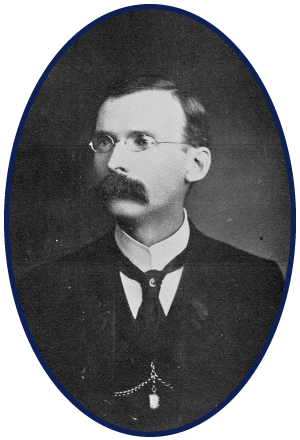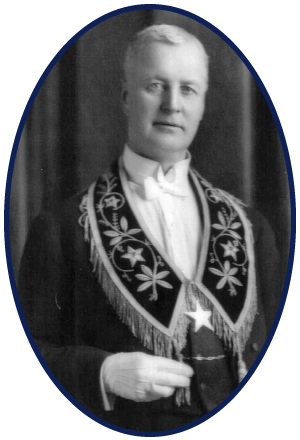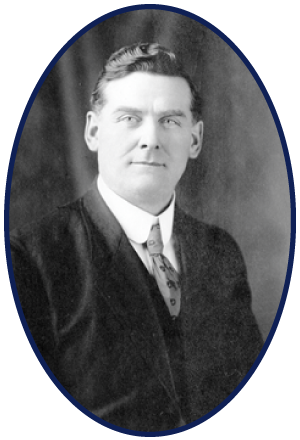History of Odd Fellowship
Origins
It is unfortunate that the origins of Odd Fellowship have been lost in time… The question of when and where our Order first originated, and how the name was first chosen can never be answered with absolute certainty. The earliest surviving printed record is said to be the “Rules of Loyal Aristarchus Lodge no.9” in England dated March 12, 1748. This establishes the fact that this lodge had been operating for some time prior thereto, and its number indicates that at least eight other lodges that were associated with each other had existed up to that time. The oldest surviving revised initiation ceremonies date back March 12, 1797 under the “Order of Patriotic Odd Fellows”. The first recorded meeting of an Odd Fellow Lodge was in the year 1745, at the Oakley Arms in England. In those days it was common for working men to meet at local taverns for evenings of social recreation. But as time passed, a particular group of men found a common purpose in aiding each other. They began to establish funds through regular collections to assist members out of work or in distress.
It is believed that this is when and how the name Odd Fellows was attained. In those days, it was customary for the aristocracy to form philanthropic societies, but it was unthinkable for the common labourer to do so, and to meet in a tavern was very odd indeed. Another theory comes from the custom of skilled labourers banding together for mutual assistance. Feeling left out, a group of odd labourers formed their own union.
Because of the outbreak of the French Revolution in 1789, fraternal and friendly societies were suppressed in England. Fear of revolution was not the sole reason for persecution; Fraternal and Friendly Societies like the Odd Fellows were the predecessors of modern-day trade unions and could facilitate effective local strike action by levying all of their members for additional contributions for their benevolent funds, out of which payments could be made to the families of members who were on strike.
The Unlawful Oaths Act of 1797 and the Unlawful Societies Act of 1799 suppressed almost all fraternal and friendly societies in England. These Acts by the government may be considered an interference for “people’s rights of association” if it were today but life was different back then. As a result, many of the early lodges lodges closed-down while some went underground developing secret handshakes, passwords and ciphers for their meetings. This also meant that many documents were deliberately destroyed to protect members from identification and arrest. Almost all traces and artifacts of the existence of the early lodges are now lost. In 1803, the Odd Fellows were revived by an organization called the “London Union Odd Fellows” which later claimed itself as the “Grand Lodge of England” and assumed authority over all Odd Fellow lodges in that country.
Rise of The Manchester Unity
In 1810, however, several lodges located in the Manchester area declared themselves as an “Independent Order of Odd Fellows” with the title “Manchester Unity”. In 1814, they elected officers and proceeded to standardize degree work of the lodges. With their improved system, they were able to persuade other lodges to join their unity. They also chartered the Independent Order of Odd Fellows (I.O.O.F.) in North America years in 1819.
Odd Fellowship comes to North America
The Odd Fellows were founded on the North American continent in Baltimore, Maryland at the Seven Stars Tavern on April 26, 1819 by Thomas Wildey and four members of the Order in England. Washington Lodge No. 1 received its charter from the Manchester Unity of Odd Fellows in England.
In Britain in 1834, the Tolpuddle Martyrs were unexpectedly convicted and transported for “membership of an illegal friendly society”. The Oddfellows of Manchester Unity quickly modified their constitution to evade a similar fate. Members of the Oddfellows in the United States were not pleased to see the ancient rituals changed without their agreement, particularly to satisfy a British Government against which they had fought a war of independence. As a result, the Oddfellows in America declared their independence from the Manchester Unity of Oddfellows and became a self-governing Order – the Independent Order of Odd Fellows.
History of Odd Fellowship in Canada
Twenty-four years after the birth of the American Order in Baltimore, Maryland, on August 10, 1843, the first Odd Fellow lodge instituted in Canada This was the Prince of Wales Lodge No. 1 in Montreal, PQ. It received its charter through the efforts of two American Odd Fellows living in Montreal. They petitioned the Grand Lodge of the United States for a lodge charter. That authority granted the charter after some very serious soul searching and deliberation.
Within fifteen months, there were three lodges in the Montreal area who petitioned and received a charter to operate as the Grand Lodge of Canada under the leadership of W.M.B. Hartley as Grand Master.
This was the beginning of a brief period of prosperity. The Order spread rapidly to become a fashionable and popular society in Canada. Montreal was the capital of Canada in 1843 and there were amongst the Odd Fellows, many prominent elected members of parliament. The lodges became private social clubs in the eyes of some of the members. These members could retreat from their daily hectic parliamentary lifestyle to enjoy some private male activities.
During the formative years, those members engaged in parliamentary activities were strong free thinking nationalists. Having learned of the change approved by the Grand Lodge of the United States, they felt that the Canadian operations should be more independent. Accordingly, they petitioned the Grand Lodge of the United States for sovereign status as a quasi-independent jurisdiction. Subsequently, the Grand Lodge of British North America received this authority with some limitations on their powers. This new Grand Body was the first of its kind and included both the Odd Fellow and Patriarch branches in Canada.
At the peak of its short-lived history, the Grand Lodge of British North America chartered four Grand Lodges and twenty-eight Odd Fellow Lodges under their respective jurisdictions. In addition, because this Grand Body served all of Canada, one Odd Fellow Lodge located in Nova Scotia was granted a charter. However, the burden of this organization may have been too heavy or the novelty of membership in the Order may have worn off on the senior officials of the Grand Lodge of British North America. They defaulted on their responsibilities to the subordinate members of the Order. All lodges in the city of Montreal formally disbanded in 1853. The debts of the Grand Lodge were paid by the subordinate lodges remaining. The leadership walked away from the charter, so that finally in 1854 the Grand Secretary of the Grand Lodge of the United States made a visit to Quebec City. He was trying to ascertain whether any hope was evident to resuscitate the Order in Canada. Unfortunately, there was no positive evidence to revive the charter of the Grand Body in Canada. The Grand Secretary reported to the annual session of the Grand Lodge of the United States these facts. He recommended that the seven orphaned Odd Fellow Lodges in Ontario and the one in Nova Scotia be brought under the umbrella of the Grand Lodge of the United States.
The short career of the first sovereign quasi-independent jurisdiction ended. In retrospect, the Order has survived in Canada and seven jurisdictions continue to operate under the Sovereign Grand Lodge to this day.
Source: H. Robert Howard, IOOF.org
History of Odd Fellowship in British Columbia
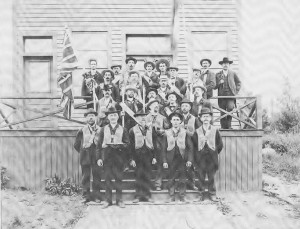 The Province of British Columbia, on the Pacific coast of Canada, consists of what were formerly two colonies – Vancouver Island and British Columbia or ‘New Caledonia’ – which were united under the name of British Columbia in 1866, and became part of the Dominion of Canada in 1871. Originally occupied by the Hudson’s Bay Company for hunting and trading purposes, the first immigration of any importance was in connection with the rush of gold-seekers in 1857, and again in 1862. On both occasions, the “boom” dropped suddenly, but left behind a number of sturdy settlers of all nationalities who formed the nucleus of a more steadily growing population. Among these were some Odd Fellows from California who as soon as they felt themselves permanent residents, were naturally desirous of organizing a lodge. The fact that the Order in the jurisdiction from which they hailed understood the situation and was anxious to forward their wishes, is shown by the fact that, at the session of the Grand Lodge of the United States in 1863, a resolution was submitted by the California Representatives, asking that the colony of British Columbia be attached to the jurisdiction of California, pro tempore; and that the Grand Lodge and Grand Encampment of that state be authorized to institute subordinate bodies in the colony, on receipt of the proper applications. This resolution met with the approval of Representative Hovey of Oregon, the nearest jurisdiction, and of Representative Bingham of Canada West, the leading British American jurisdiction, and was adopted.
The Province of British Columbia, on the Pacific coast of Canada, consists of what were formerly two colonies – Vancouver Island and British Columbia or ‘New Caledonia’ – which were united under the name of British Columbia in 1866, and became part of the Dominion of Canada in 1871. Originally occupied by the Hudson’s Bay Company for hunting and trading purposes, the first immigration of any importance was in connection with the rush of gold-seekers in 1857, and again in 1862. On both occasions, the “boom” dropped suddenly, but left behind a number of sturdy settlers of all nationalities who formed the nucleus of a more steadily growing population. Among these were some Odd Fellows from California who as soon as they felt themselves permanent residents, were naturally desirous of organizing a lodge. The fact that the Order in the jurisdiction from which they hailed understood the situation and was anxious to forward their wishes, is shown by the fact that, at the session of the Grand Lodge of the United States in 1863, a resolution was submitted by the California Representatives, asking that the colony of British Columbia be attached to the jurisdiction of California, pro tempore; and that the Grand Lodge and Grand Encampment of that state be authorized to institute subordinate bodies in the colony, on receipt of the proper applications. This resolution met with the approval of Representative Hovey of Oregon, the nearest jurisdiction, and of Representative Bingham of Canada West, the leading British American jurisdiction, and was adopted.
Introduction of Odd Fellowship. – The dispensation for the first lodge in British Columbia, was issued by the Grand Lodge of California on the 27th of February, 1864, and was sent to Brother James S Drummond, who had been the leading spirit among the local Odd Fellows; he was appointed District Deputy Grand Master. The lodge, Victoria #1, was instituted by Brother A H Guild, a special deputy, on the 10th of March, 1864. It is believed that this was the first benefit society organized in the province.
Victoria Lodge made fair progress, but was rather too conservative in its ideas to suit its more enthusiastic members, and after a few years, some of them “swarmed” from the old hive. On February 15, 1870, Brother Drummond instituted Columbia Lodge #2 with eight charter members. It commenced with twelve initiates the first night.
As soon as they had a second lodge, some of the brothers began to think of an encampment, and four patriarchs sent a petition to the Grand Encampment of California for a charter. That body granted the petition, and Past Chief Patriarch Miller was sent to British Columbia to confer the patriarchal degrees on six brethren. These members, along with Patriarch J.S. Drummond, constituted the charter members of Vancouver Encampment #1, instituted on the 24th of January, 1871.
The Grand Lodge of British Columbia. – For some time, no more lodges were organized in British Columbia, and the brethren felt that if the Order was to make any progress, it should have home rule. California was too far away. Of course the law of the Grand Lodge of the United States required ten subordinates to constitute a Grand Lodge, but it seemed to the British Columbia Odd Fellows that their special circumstances called for exceptional treatment. They therefore sent an urgent memo to the Grand Lodge of United States at its session in 1871, defining the situation, asking for a charter, and offering to pay the expenses of their representative until such time as they had the requisite ten subordinates. The supreme body, however, with its usual conservatism, refused to grant the petition. Representative Woodyatt of Ontario, ever watchful of the interests of Odd Fellowship in all parts of Canada, offered a resolution authorizing the granting of the charter, but failed to secure its adoption.
By the next year however, a fourth lodge – Dominion #4 in Victoria – had been instituted, and the petition for the Grand Lodge charter bore signatures of a majority of the members – two hundred and eight out of three hundred and sixty. Under the peculiar circumstances of the jurisdiction, it was thought best to grant the charter.
About the time that the Vancouver Encampment was organized, the Order stepped from Vancouver Island, and gained a foothold on the mainland – New Westminster Lodge #3 was instituted at New Westminster on March 22, 1871.
It became necessary at this time for the Grand Lodge of the United States to settle a question of jurisdiction which had given rise to some confusion. British Columbia had been attached to California before the lodges were instituted, and the Grand Lodge and Grand Encampment of California proceeded to institute subordinates as though they were part of their own state. This condition, though under the circumstances of great benefit to the Order, was clearly in contravention of the Constitution of the Grand Lodge of the United States which secured to that body the right of jurisdiction over all states and countries where no Grand bodies existed.
Accordingly, at the session of 1873, the legislative committee defined the rights and powers of the respective bodies, establishing the law and practice to be thereafter followed, that in all countries where no Grand Lodge existed, the Grand Lodge of the United States, alone, could charter a subordinate; and that, after being chartered, such subordinate might, at its own request be placed under the jurisdiction of the nearest Grand Lodge. This was adopted, and all subordinates chartered by Grand bodies outside of their own boundaries, received new charters in lieu of those previously held. Thus the four lodges in British Columbia received new charters directly from the Grand Lodge of the United States. A fifth lodge, Black Diamond #5, was instituted on April 7, 1874, and on April 25th, the “Grand Lodge of B.C.” was instituted by Past Grand Representative A. Noltner of Oregon. Brother James S Drummond was the first Grand Master.
The order expanded rapidly after 1887 and by 1900 there were 3,216 members in 40 subordinate lodges. The orders peak membership was in 1928, at 8250 members in 63 lodges. By 1951 the membership was 4,909 in 63 lodges.
Source: “History and Literature of Odd Fellowship: The Three-Link Fraternity” by Fraternity Publishing Co. 1897. Henry Leonard Stillson, Editor-in-Chief; Frederick Davie of Victoria & J.B. Ballantyne of New Westminster, Contributors.
History of Odd Fellowship in Vancouver
Less than a year after Vancouver was founded (April 6, 1886), the city’s first Odd Fellows lodge, Vancouver (Hastings) #8 was founded (January 24th, 1887). Odd Fellowship flourished in Vancouver and by 1922 there were 12 lodges in Vancouver. Many prominent members of Vancouver business became members and the Odd Fellows served as a social networking and support organization.
In the late 19th and early 20th century membership in Odd Fellows meant you had access to an early form of medical and workers insurance. The Odd Fellows maintained what was a fore runner to what is today Canada’s universal healthcare plan. Benefits were paid out regularly to those members who were sick and unable to work. Members had to meet criteria to be eligible for these benefits such as being employed, dues being fully paid, etc. Each lodge also had its own doctor to ensure that the members were healthy and when claiming were properly vetted. Because of this benefit, membership was a much desired commodity.
During the recession of the 1930’s membership tailed off as members became unemployed and were unable to afford the dues. This led to a decrease in membership especially among the younger members. Around this time the lodges decided that due to inflation the benefits paid out were of too low a value to be of any help to the member. It was also felt that there were members who solely joined for the health benefits and not to be social contributing members. This brought about the discontinuation of the health benefits program offered by the Odd Fellows.
Members also had access to subsidized burials as the Odd Fellows purchased a block of land within the Mountain View Cemetery. Which is still there today. The Vancouver Odd Fellows continued in their good work throughout the 20th century. During the Second World War they donated ambulances and other medical supplies to the war effort, with many members joining the armed services. After the war the Odd Fellows continued to part of the social fabric of Vancouver.
In the 1980’s Odd Fellows members continued to support the local community through various building projects such as low income housing developments and a seniors care centre. Odd Fellow Halls also became the centre of many social activities. The Mount Pleasant Hall on Main Street became known as the Arcadian Hall and was a great dance venue. The Grandview Pacific Lodge on Graveley Street became an important venue for the punk rock movement during the 70′ and 80’s.
Slowly though over the years as government took on more of the social assistance role and people found less time to socialize the lodges lost their importance to younger Vancouverites and memberships dwindled. This led to closure and merging of the lodges until only one has remained, todays Vancouver-Fairview Lodge 90.
The Lodge 90 members today see a resurgence of the factors that led to the original formation of Odd Fellowship in Vancouver 130 years ago. The need for fundraising and gifting in support of various local causes, as well the need for face to face social interaction in our busy and increasing disconnected lives brought about by technology. As Vancouverites in the 21st century, we believe that the values and principles of our Order are as relevant and important as they ever have been and look forward to the future.
The Lodges
Vancouver-Hastings #8
Vancouver #8 was first instituted on January 24, 1887 in Gray’s Hall on Cordova Street in an installation carried out by DDGM C.S. Scoullar and its first Noble Grand was William Vivian. Lodge #8 held its meetings in several locations in what is now Gastown, including from 1888 the Masonic Hall at the corner of Cordova and Cambie Streets, and then briefly to the Sullivan Hall, 61 W.Cordova in 1902. In 1906 construction was completed on a new building at 505 Hamilton (corner of Hamilton and Pender). The Odd Fellows Hall at 505 Hamilton housed three lodges Vancouver #8, Western Star #10 and Pacific #26. The Odd Fellows Hall was sold in 1945 and Vancouver #8 moved to 1720 Graveley Street until 1963 when they merged with Lodge#29 and moved to 396 Kamloops Street. Finally on March 15, 1983 they moved to 1443 West 8th. On October 18, 1990, Vancouver #8 merged with Fairview #19 . The newly merged Lodge was called Vancouver-Fairview #90.
Western Star # 10
Instituted on June 30, 1889 at the Masonic Hall (Springer Block) on Cordova. Originally held meetings at a hall at 172 Alexander, then relocated to the Dunn-Miller block 8-28 W.Cordova, followed by the Sullivan Block Hall at 61 W. Cordova then finally to the new Odd Fellows Hall at 505 Hamilton. Western Star moved to 1720 Graveley Street in 1945. Finally merging with Grandview Pacific #26 on April 28, 1975.
Mount Pleasant #19
Instituted May 26, 1892. The lodge orginally met in a building on the Archer Block of land on Westminster (Main) St. They built a hall there in 1905 located at 2214 Main Street. The Main Street Odd Fellows hall became known as the Arcadian Hall which went on to become popular dance music venue. It was destroyed by an arson fire in December 1993. Lodge #19 had long since moved on before then, leaving in December, 1955 for the Knights of Pythias Hall at 303 East 8th Avenue. They were again on the move in May of 1963 relocating to the Little Mountain #60 hall at Main and 30th (196 E 30th). Mount Pleasant #19 merged with Fairview #61 on November 4, 1965 and became Fairview #19.
Island Lodge (Eburne) #24
Instituted March 1, 1893. In 1910 Lodge #24 built its own hall located at 1324 SW Marine Drive. In 1972 Island Lodge sold it’s hall and moved it’s meetings to Fairview Hall on West 8th. On September 7, 1972 they were absorbed by Fairview Lodge #19.
Pacific Lodge #26
Instituted March 1, 1894. Originally met in the O’Brien Hall at Hastings and Homer then relocated to the new hall at 505 Hamilton. Moved to 1720 Graveley Street in 1945. Originally was the Loyal Pacific Lodge of the Canadian Order of Odd Fellows, but in February of 1894 the entire lodge defected to the I.O.O.F. Merged with Grandview #62 February 11, 1955 becoming known as Grandview Pacific #26. On April 28, 1975, Little Mountain #60 and Western Star #10 merged with Grandview Pacific #26 to become Unity #4.
Little Mountain #60
Instituted December 21, 1909. Their hall was situated at Main and 30th Avenue, 196 East 30th Avenue. Little Mountain merged with Grandview Pacific #26 on April 28, 1975.
Grandview Lodge #62 (later Grandview Pacific)
Instituted May 30, 1910. In 1922 the lodge built a new hall at 1720 Gravely Street. Merged with Pacific #26 on February 11, 1955 and became Grandview Pacific #62. In 1975 they merged with Little Mountain #60 and #10 Western Star to become Unity #4.
Fairview #61
Instituted April 21, 1910. The first Noble Grand was T.H. White. C.E Mahon, Alderman and Police Commissioner 1913 to 1916, was a founding member and the second NG. Fairview Lodge originally met above the Main Market at 2233 Granville Street. In 1922 the lodge built a new hall at 1443 West 8th Avenue which is now the current home of the Vancouver Odd Fellows. On September 2, 1920, Snowshoe Lodge #46 of Phoenix merged with Fairview when its mine closed. Much later Fairview #61 merged with Mount Pleasant #19 on November 4, 1965 and became Fairview #19.
Aaron #14
Instituted August 28, 1912. Their meetings were held at the Odd Fellows Hall at 2214 Main Street. The lodge merged with Ridgely #22 on June 26, 1933 and became Hillcrest #49 a year later.
Ridgely #22 Instituted May 19, 1914. The hall was located at 1680 Kingsway. The lodge merged with Aaron #14 on June 26, 1933. Finally becoming Hillcrest #49 on July 1, 1934.
Hastings # 29
Instituted March 25, 1917. Their meetings were held a 131 Templeton St. until 1930 when they moved to 396 Kamloops Street. They remained in the hall at Hastings and Kamloops until May 28, 1963 when they merged with Vancouver #8.
Kerrisdale #31
Instituted January 22,1921. Met originally at Masonic Hall 2146 W 41 Ave, then moved to 6284 East Boulevard in 1951, then to 4336 Dunbar, finally ending up at Island #24 Lodge Hall in 1964. In May of 1972, Kerrisdale #31 moved it’s meetings to Fairview #19’s lodge and on December 7, 1972 they merged with Fairview #19.
Daylight Lodge #24
Instituted June 22,1927. Held meetings at the Odd Fellows Hall at 2214 Main St. Merged with Little Mountain #60 on January 6, 1944.
Hillcrest #49
Instituted on July 1, 1934 from the merger of Aaron and Ridgely lodges. Held meetings at 4521 Victoria, in 1941 moved to 2214 Main and to 756 Kingsway in 1946. Merged with Pacific #26 on January 9, 1951.
Unity #4
Instituted June 28, 1975. Formed by the merger of three lodges, Grandview Pacific, Little Mountain and Western Star. Continued meeting at 1720 Graveley until merging with three other lodges to form Vancouver-Fairview #90 in 1990.
Vancouver – Fairview #90
Instituted Oct 18, 1990. Formed by the merger of four lodges, Unity #4, Vancouver-Hastings #8 Fairview #19 and North Burnaby #37.
Hemlock #8 – Vancouver
Instituted June 1st, 2017. Meetings are held at the Heritage Hall at 1443 West 8th Ave, Vancouver, BC
Some Notable Early Vancouver Odd Fellows
W.H. Gallagher 1935
Elected Alderman in 1897. He was present at the first Vancouver Council in 1886 meeting. b 1864 -d 1942
Sam North 1903 – Front row centre
Vancouver’s Chief of Police 1901 to 1906. Involved in the pursuit of train robber Bill Miner in 1904.
Thomas Dunn 1887 – Standing, back left
Alderman on the first Vancouver City Council. Leading businessman of early Vancouver. Built the Dunn-Miller Building at 28 W Cordova and the Dunn Building at 110 Carrall Street.
E.J. Annesley 1914
First Staff Sergeant for Vancouver City Police. Original member of the mounted unit.
Alexander Mitchell 1906
Owner, Stanley Park stables, the taxi business of his day, with 86 horses, 40 rigs, seven hacks and two tallyhos. WWI and the popularity of the automobile led to bankruptcy in 1914. b. 1866-d. 1948.
George McSpadden 1910
The City of Vancouver’s first building inspector and city assessor. Elected City alderman 1907-1913. McSpadden St. and McSpadden Park named for him.
T.C. Gray
Original Lodge #8 member. One of the original founding members of the Odd Fellows in Vancouver in 1887. Grand Master of BC 1894-95.
Malcolm Bruce MacLennan 1914
Vancouver Police Chief 1914 -17. Killed in the line of duty March 20, 1917.
T.F. Neelands
Original Lodge #8 member. One of the original founding members of the Odd Fellows in Vancouver in 1887. Grand Master of BC 1904-1905.
T.H. White
First Noble Grand of Fairview Lodge #61 in 1910.
Charles Edwin Mahon
Founding member of Fairview Lodge #61. He was a Vancouver Alderman and the Commissioner of the Vancouver City Police for four years from 1913 to 1916.
15 best home workouts for women, according to personal trainers winstrol for sale monster hunter workout



